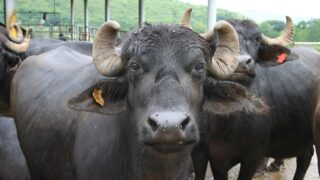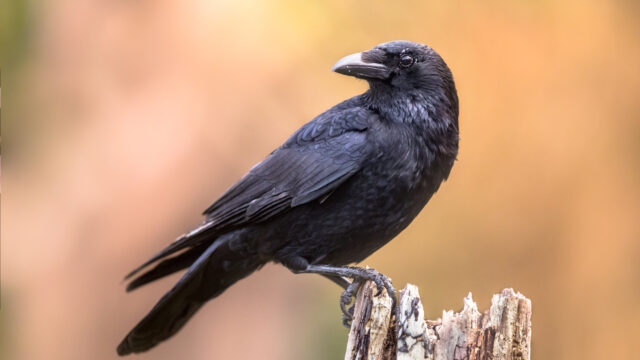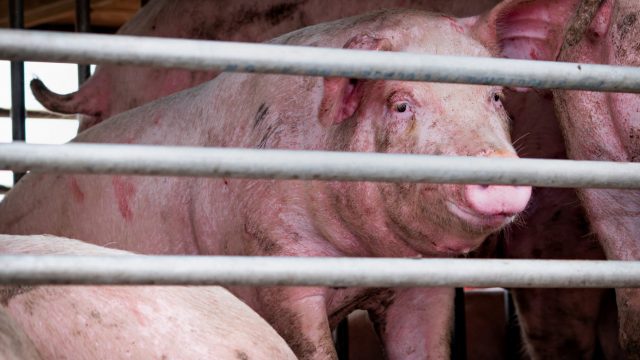
India’s Punjab and Haryana High Court Rules Animal Rights Outweigh Private Settlement
By Nicole Pallotta, PhD, Senior Policy Program Manager
Summary:
Summary: Drawing on previous animal rights rulings, India’s Punjab and Haryana High Court denied a petition to avoid criminal proceedings in the case of a reckless driver who hit a group of buffaloes being walked along the road, injuring one and killing the other. Noting that animals have rights and cannot be treated merely as property, the Court ruled the trial would proceed despite a private settlement entered into by the legal owner of the buffaloes and the driver, tacitly recognizing a third party: the injured buffaloes themselves. Though this ruling had narrow applicability, the finding that animal rights transcend a private settlement between the human parties is a striking example of non-anthropocentric jurisprudence.
In January 2024, India’s Punjab and Haryana High Court rejected a petition to quash a First Information Report (FIR)1 in the case of a reckless driver who fled the scene after crashing a bus into a group of buffaloes, killing one and injuring another. While the complainant was walking four buffaloes and two calves from his house to a field in 2016:
The allegation against petitioner is that he was driving the bus in a rash and negligent manner at a high speed and smashed the bus into the buffaloes/calves going on the side of the road, which resulted into death of one buffalo and injury to another.
The petition to quash the FIR was filed by the driver after he entered into a settlement agreement with the legal owner of the buffaloes, thereby seeming to obviate the need for a trial. However — noting that animals have rights and cannot be treated merely as property — the Court denied the petition. Justice Harsh Bunger wrote:
In my view, animals may be mute but we as a society have to speak on their behalf and no pain or agony should be caused to the animals. Cruelty to animals also cause psychological pain to them. Animals breath like humans and have emotions; they require food, water, shelter, normal behavior, medical care, self-determination. The animals have a right to life and bodily integrity, honor and dignity. Animals cannot be treated merely as property.
In ruling the trial would proceed despite the agreement entered into by the human parties, the Court tacitly recognized a third party: the injured buffaloes themselves.2The Court emphasized this was a procedural decision only and that it was not making a statement on the merits of the case — just that it should proceed, “keeping in view the totality and circumstances.”
Previous Animal Rights Rulings Cited by the Court
The “totality and circumstances” mentioned include a groundbreaking previous ruling from the same court in 2019,3 which adopted verbatim the language of a ruling from the Uttarakhand High Court in 2018.4 Both of these cases were decided by the same judge, Justice Rajiv Sharma, and both cited the Supreme Court of India’s landmark decision in 2014,5 which found animals have rights under Article 21 of the Constitution.
Going further than the Supreme Court, the high court decisions stated unequivocally that all animals have the status of legal person, cannot be treated as objects, and are entitled to justice.6 Justice Bunger quoted from those rulings in his decision to reject the petition:
All the animals have honour and dignity. Every specy [sic] has an inherent right to live and is required to be protected by law. The rights and privacy of animals are to be respected and protected from unlawful attacks. Their Lordships have evolved the term ‘species’ best interest.’ The Corporations, Hindu idols, holy scriptures, rivers have been declared legal entities and thus, in order to protect and promote greater welfare of animals including avian and aquatic, animals are required to be conferred with the status of legal entity/legal person. The animals should be healthy, comfortable, well nourished, safe, able to express innate behavior without pain, fear and distress. They are entitled to justice. The animals cannot be treated as objects or property…
What Rights do Animals Have?
The substantive animal rights named by Justice Bunger are strong but the path to vindication of these rights is opaque. The right to “life and bodily integrity” is one of the strongest rights imaginable. Similarly powerful is the right to “self-determination.” The right to “honor and dignity” is weaker, as these more abstract concepts are difficult to define and operationalize. The implicit right of animals to be free from human-caused “pain or agony,” and the right to receive food, water, shelter, and medical care, are more practical but are weaker rights because they address only what animals need for basic survival, but not higher order behavioral, social, or psychological needs.
The implied right to “normal behavior” occupies a middle ground between powerful rights like a right to life and minimal rights like a right to sustenance. It holds promise as being more immediately actionable while also providing a strong right that addresses what animals need to thrive and not merely survive. This simple right — informed by the steady accumulation of scientific knowledge about species-specific needs and behavior in recent decades — would implicate many current uses of animals and demand either their cessation or drastic reform. Commonsense and uncontroversial on its face, a right for animals to engage in normal behavior would be groundbreaking if implemented.
Animal Rights Versus “Human Necessity”
The Supreme Court of India’s finding in Animal Welfare Board of India v. Nagaraja and Ors (2014) that animals have a right to life — cited in this case by Justice Bunger via the previous high court rulings — contained a rather large loophole: “human necessity.” The Supreme Court wrote: “Every species has a right to life and security, subject to the law of the land, which includes depriving its life, out of human necessity” [emphasis added]. This loophole and its equally ill-defined counterpart, “unnecessary suffering,” are common in declarations asserting strong rights for animals.7
While human necessity is an unfortunately sweeping exception used to justify many forms of animal exploitation, its interpretation is subject to change as social and legal norms evolve over time. Thus it is not an inflexible jurisprudential concept but may prove to be malleable as cultural attitudes regarding acceptable treatment of animals shift away from domination and toward respect.
Indeed, the Supreme Court’s ruling that the activities at issue — Jallikattu, Kambala, and bull cart racing — were illegal hinged on the concept of necessity, finding they were “avoidable non-essential human activities” and thus violated rights granted to animals under the Prevention of Cruelty Act. Unfortunately, this landmark decision was overturned in May 2023, rendering these cruel activities legal once again.8
Significance of Ruling
As with similar rulings containing lofty language about animal rights, contradictions are apparent. If animals truly “have a right to life and bodily integrity” it would of course be illegal to confine and kill them for food or other purposes serving human interests. Yet this is not the case in India or elsewhere.
The previous high court rulings upon which the current decision relies mention a right to life as well, finding “every specy [sic] has an inherent right to live.”9 The right to “self-determination” likewise would negate many current uses of animals and, depending upon how self-determination is defined, would call into question such accepted societal practices as both animal farming and pet keeping.10
Unlike the Supreme Court of India’s decision, the Punjab and Haryana and Uttarakhand High Court rulings do not explicitly mention human necessity but — given the wide chasm between the animal rights named in the ruling and current societal practices — one assumes it is implied.
Despite what a literal interpretation of the rights mentioned would imply, this ruling did not outlaw any current uses of animals nor did it apply even to the merits of this particular case, amounting to a procedural decision. However, procedural decisions are equally important in aiding the global shift toward legal systems where animals have access to justice.
The Court recognizes this when, recalling the persistent problem of legal standing, it observes that because animals have rights but are “mute” — i.e., cannot speak using human language in a court of law — humans have a duty to represent them (“have to speak on their behalf”).11 Convoluted and anthropocentric standing requirements frequently prevent animals from being actually — not just theoretically or symbolically — protected under laws which have been enacted for their benefit. Substantive rights are crucial for access to justice but can be hollow without a corresponding procedural right enabling the former to be vindicated.
Though this ruling had narrow applicability, the sweeping animal rights language is laudable and indicates legal progress. As with many rulings, its impact will be seen in judicial interpretation. The rights language from the previous high court decisions was broad, but Justice Bunger interpreted it in the context of two specific animals, the buffalo who was killed and the other who was injured. As social and legal norms evolve slowly but steadily away from unabashed anthropocentrism and toward multispecies justice, this case shows how aspirational language can be applied in a way that serves individual animals.
Conclusion
The Court’s language in this ruling is aspirational and its practical impact will hinge on judicial interpretation in the future. However, the finding that animal rights transcend a private settlement entered into by the human parties is a striking example of non-anthropocentric jurisprudence. In rejecting the petition on the grounds that animals cannot be treated merely as property, Justice Bunger implicitly acknowledged the interests of the individual buffaloes who were harmed and killed, apart from their legal owner’s interests — a clear and important distinction that recognizes a legal status for animals independent of their perceived value to humans. That the ruling was grounded in previous animal rights decisions shows further promise that these decisions will be built upon in the future.
Further Reading
- Decision (IN THE HIGH COURT OF PUNJAB AND HARYANA AT CHANDIGARH. Sohan Singh v. State of Punjab and Others. January 29, 2024).
- Kumari, Swati. “Punjab and Haryana High Court Rejects Compromise, Affirms Advocacy for Animal Rights.” Legal Chakra. February 13, 2024.
- Gulatsi, Taylor. “Legal Personality for Animals in India and Pakistan.” Library of Congress. August 30, 2023.
- Chakraborty, “India dispatch: Supreme Court flip allowing controversial animal sports shifts responsibility for policing cruelty from judiciary to executive.” Jurist. June 2, 2023.
- Reddy, Rajesh K. “Groundbreaking Litigation Seeks to Extend Formal Personhood Status to India’s Animal Kingdom.” Center for Animal Law Studies, Lewis & Clark Law School. September 8, 2020.
- Nambiar, Varun. “India court rules in favor of legal person status for all animals.” Jurist. June 3, 2019.
- Animal Bill of Rights. Animal Legal Defense Fund.
- The FIR is a document prepared by police in India after receiving a complaint about a cognizable offense, which sets criminal justice proceedings in motion.
- Unlike cows, who are covered under the Punjab Prohibition of Cow Slaughter Act, 1955, buffaloes do not have special legal protections in Punjab and Haryana. Although a federal ban on cattle slaughter, which included buffaloes, was enacted in 2017 it was quickly suspended by the Supreme Court of India. Currently, laws pertaining to cattle slaughter vary by state.
- Karnail Singh v. State of Haryana (2019)
- Narayan Dutt Bhatt v. Union of India (2018)
- Animal Welfare Board of India v. Nagaraja and Ors. (2014)
- Karnail Singh v. State of Haryana, 2019(3) R.C.R. (Criminal) 396, the Hon’ble Punjab and Haryana High Court, while considering a case under Punjab Prohibition of Cow Slaughter Act.
- See, for example: “Islamabad High Court Holds that Animals Have Legal Rights” (on “unnecessary suffering”) and “Ecuador’s Constitutional Court Rules Wild Animals Are Subjects of Legal Rights Under the Rights of Nature” (on human exceptionalism). The prohibition against unnecessary suffering is common in US animal cruelty laws as well.
- On the Supreme Court’s reversal, see: “Legal Personality for Animals in India and Pakistan.” On the activities banned in 2014 that are now legal again, see: “PETA India Moves Supreme Court With New Investigations Into Jallikattu, Kambala and Bull Races.”
- Although the “specy” referent could be interpreted to mean that species have a right to exist at the population level versus individual animals.
- The Animal Legal Defense Fund’s proposed Animal Bill of Rights includes a right to “self-determination” only for animals in the wild. Rights for animals under human care (e.g., companion animals) include a right to “have their species-specific and individual needs fulfilled to maximize their physical, emotional, and mental well-being.”
- On the legal challenges and ethical necessity of speaking for animals, see: Liebman, Matthew. 2024. “Representing Animals.” Maryland Law Review. Forthcoming.
Related
-
Animal Legal Defense Fund Grant Supported Washington Attorney General’s Enforcement of Animal Cruelty Law
The judge sentenced a Snohomish County resident for killing then displaying neighborhood wildlife and shooting a kitten in the eye.April 18, 2024 News -
REPORT: 95 Percent of Consumers Prefer “Climate-Friendly” Products, But Labels Oversell Emission Reductions
New report reveals how misleading labels lead to increased confusion among consumers searching for more sustainable, less environmentally damaging products.April 2, 2024 Press Release -
Lawsuit Filed Demanding FDA Respond to Petitions Seeking to Ban Ractopamine
FDA’s approval for ractopamine relied primarily on safety studies conducted by the drugmaker.March 26, 2024 Press Release



